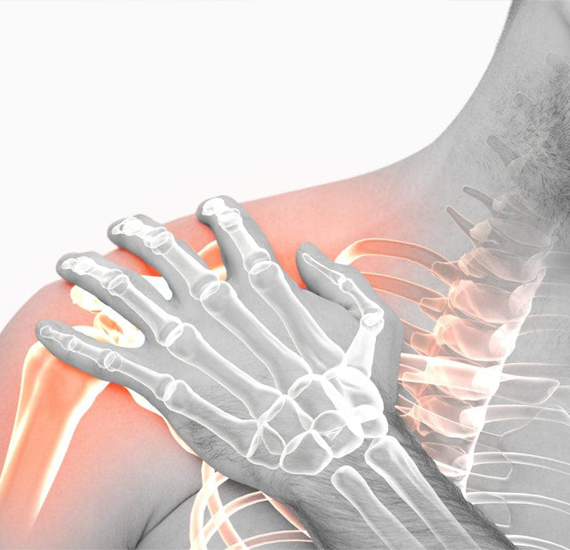Signs or Symptoms
- Loss of motion in the shoulder; particularly the motion that allows you to reach behind you or reach over your head.
- This is accompanied by a deep ache in the shoulder that slowly progresses to sharp pain on motion.
- One of the first symptoms is an inability to sleep on your shoulder without an ache deep in the shoulder.
Description
There are three distinct stages in this condition:
Stage One: This usually starts with a slow worsening of the symptoms. There is initially an ache in the shoulder that advances to a distinct pain. This increases with movement and is often worse at night. There is a progressive loss of range of motion.
Stage Two: The initial phase is followed by a decrease in pain as one compensates by decreasing use of the shoulder. The range of motion, along with muscle weakness, slowly worsens.
Stage Three: For some, the condition slowly improves over two to three years with a slow increase in range of motion. Often, what is left is a dramatic loss of strength in some of the shoulder muscles.

Causes
This condition is the end result of trauma to the shoulder. It may have started as a single incident or be the end result of many minor traumas. Here, the body has over-healed the injury, resulting in tissues which normally glide against each other now sticking together. The shoulder joint is surrounded by a capsule that becomes thickened and contracted.
Treatment
The treatment begins by assessing what muscles, tendons and ligaments have been damaged and returning them to normal functioning. Specific procedures are used to slowly loosen the muscles, tendons and ligaments so that they can again slide against each other. Lifestyle modifications are used to prevent or minimize exacerbation of the condition. A specific program for your needs is created. In sever or prolonged cases, corticosteroids may be used and, rarely, surgery may be indicated.
